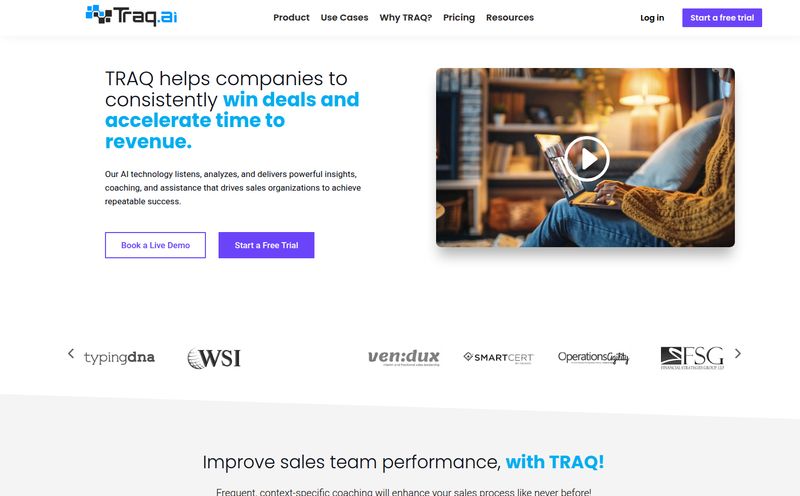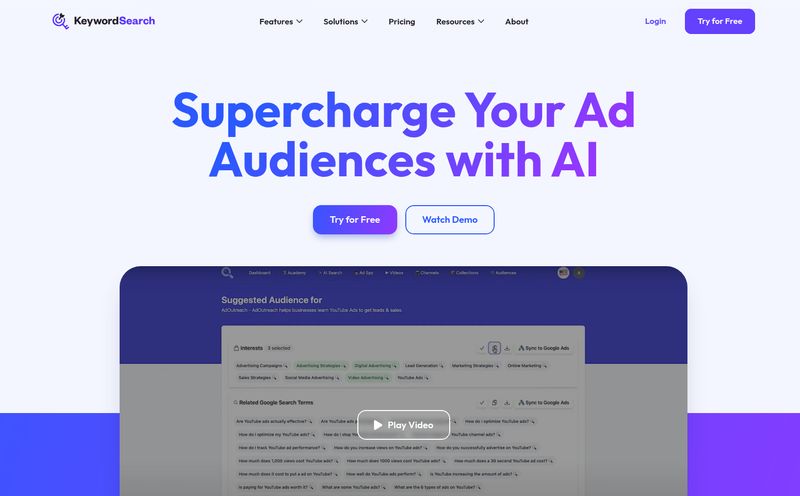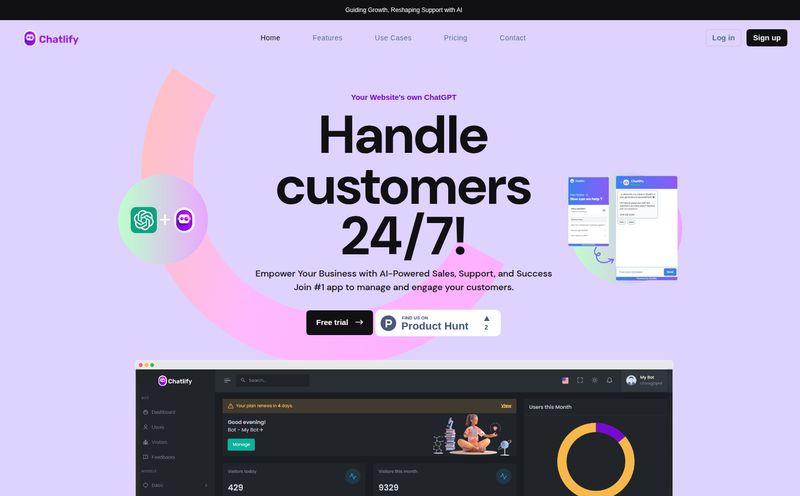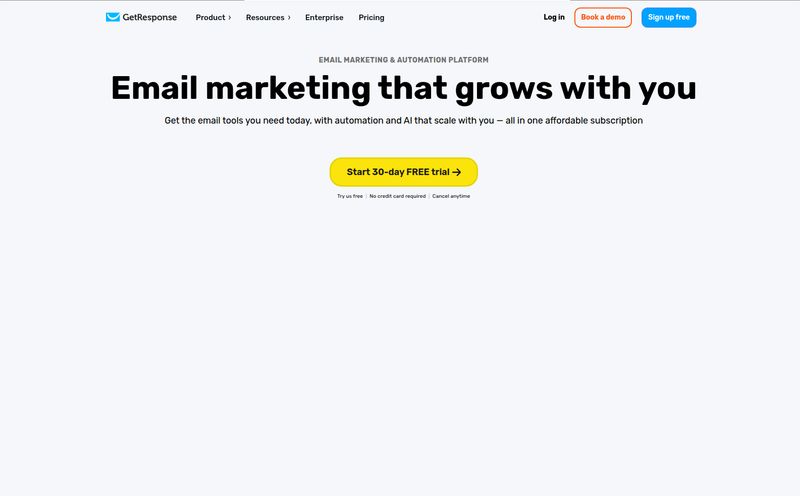If you're running any kind of customer-facing team on Salesforce, you know the struggle. You've got customer questions coming in from web chat, messages pinging on WhatsApp, DMs on social media, and good old-fashioned SMS. It's a digital octopus, and your team is frantically trying to wrangle all the tentacles without dropping one. It’s organized chaos on a good day and a complete mess on a bad one.
I've been in the trenches of traffic generation and customer experience for years, and I've seen countless tools promise to be the 'one-stop solution.' Most of them are just another login, another tab to keep open. So when I came across 1440.io, which calls itself an 'omnichannel engagement suite for Salesforce', my professional skepticism kicked in. But this one felt a little different. Why? Because it’s built natively for Salesforce. That’s not just a buzzword; it’s a potential game-changer. So, I decided to take a closer look.
What Exactly is 1440.io? The 30,000-Foot View
Imagine a digital switchboard operator living directly inside your Salesforce instance. That’s the simplest way to think about 1440.io. It’s not a separate platform that you have to awkwardly bolt onto Salesforce. It's designed to be part of the furniture. Its entire purpose is to grab every single customer conversation—from every channel you can think of—and pipe it into one unified, manageable place within the environment your team already uses every single day. The goal is to slash the time it takes to get value from your customer interactions, what the company calls “time-to-value.” No more bouncing between apps. No more lost context. Just one streamlined flow. In theory, it sounds brilliant.
The Core Features That Actually Matter
A platform is only as good as its tools. 1440.io breaks its functionality down into a few key 'Studios.' Let's cut through the marketing lingo and see what they actually do.
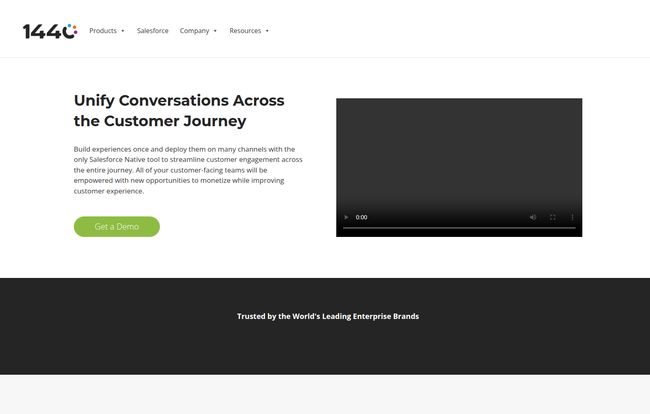
Visit 1440.io
The Messaging Studio: Your Grand Central Station for Conversations
This is the heart of the whole operation. The Messaging Studio provides that unified inbox I was talking about. Think of it: a support agent can see a history of a customer's chats, whether they reached out via SMS yesterday or the website's chatbot an hour ago, all in one thread. For anyone who has ever had to ask a customer to repeat themselves because their previous conversation was in a different system… you know how huge this is. It's about maintaining a single, continuous conversation, which is the holy grail of good customer service.
The Translation Studio: Speaking Your Customer's Language, Literally
Here’s something that caught my eye. The Translation Studio offers automated, real-time message translation. In our increasingly global market, this isn’t a small thing. Being able to support customers in their native language without needing a massive, multilingual team is a massive advantage. It breaks down barriers and makes your brand feel more accessible, more human. This is a seriously powerful feature for any business looking to scale internationally.
The Reputation & Commerce Studios: From Chat to Cha-Ching
This is where things get really interesting from a revenue perspective. 1440.io isn't just about support; it's about sales. The Reputation Studio helps you manage your brand's image, but the Commerce Studio is the real kicker. It allows your agents to sell products, process payments, and complete transactions directly within the chat window. A customer asks about a product? Your agent can pull it up, and sell it to them right then and there. This concept, conversational commerce, turns your support team into a revenue-generating powerhouse. It transforms a cost center into a profit center, and that's a narrative every CFO loves to hear.
The Good, The Bad, and The Salesforce-y
Okay, no tool is perfect. After looking through their site and pulling from my own experience with these kinds of platforms, here's my breakdown.
On the plus side, the unification is a clear win. Having all your channels in one place, powered by your rich Salesforce data for personalization, is incredible. You can greet a customer by name, know their purchase history, and anticipate their needs before they even finish typing. The AI-powered chatbots they offer are a huge piece of this, handling common queries and freeing up human agents for more complex issues. That's efficiency you can measure.
Now for the other side of the coin. The biggest 'con' isn't really a con if you're the target audience: it requires deep integration with Salesforce. If your company isn't already heavily invested in the Salesforce ecosystem, this tool simply isn't for you. It's not a standalone product. Also, a platform this integrated and powerful will likely have a learning curve. You can't just plug it in and expect magic on day one; your team will need some training to get the most out of it.
So, How Much Does 1440.io Cost?
Ah, the million-dollar question. Or maybe the ten-thousand-dollar question? It's impossible to say. Like many enterprise-level B2B SaaS platforms, 1440.io doesn't list its pricing publicly. In fact, their pricing page currently seems to be a 404, which tells its own story. The entire site funnels you toward a 'Request a Demo' button. This model means pricing is likely customized based on your company's size, usage, and the specific features you need. On one hand, it can be annoying not to see a price tag. On the other, it means you're not paying for features you'll never use. You'll just have to talk to their sales team to get a straight answer.
Who Is This Really For?
Let's be blunt. This isn't for the startup blogger using a free live chat plugin. This is a serious tool for an established business that has made Salesforce its central nervous system. If your customer support, marketing, ecommerce, and retail teams are already living in Salesforce day in and day out, 1440.io could be the force multiplier you've been looking for. It’s for the company that understands that a 5% increase in customer retention can mean a 25% increase in profit and is willing to invest in the infrastructure to make that happen.
Frequently Asked Questions
Is 1440.io a standalone platform?
No, it's not. It's an engagement suite built exclusively to work with Salesforce. You must be a Salesforce user to get any value from it.
What kind of channels does 1440.io support?
It's an omnichannel tool, so it's designed to integrate with most modern communication channels, including SMS, WhatsApp, social media DMs, web chat, and more.
Do I need a developer to set it up?
Given its native integration with Salesforce, you'll likely need some technical assistance or someone with Salesforce admin experience to get it configured properly. It's probably not a simple 'plug-and-play' setup.
How smart are the AI chatbots?
The bots leverage your existing Salesforce data, so they can be quite intelligent. They can handle routine requests, answer common questions based on your knowledge base, and escalate to a human agent when necessary, providing the agent with the full chat history.
Can I really make sales directly in the chat?
Yes. The Commerce Studio is specifically designed for this. It enables what's known as 'conversational commerce,' allowing agents to complete sales and process payments within the conversation.
Why can't I find the pricing anywhere?
This is typical for enterprise software. Pricing is usually customized based on factors like company size, number of users, and which features you'll be using. You have to contact their sales team for a custom quote.
My Final Take on 1440.io
After digging in, I have to say I'm pretty impressed. 1440.io isn't trying to be everything to everyone. It knows exactly who its customer is: a business deeply committed to the Salesforce platform. By building natively within that ecosystem, it avoids the clunky, disjointed experience that so many 'integrated' apps suffer from.
If you're constantly battling the hydra of customer communications and your company lives and breathes Salesforce, then 1440.io deserves more than a passing glance. It has the potential to genuinely streamline your operations, empower your teams, and even create new revenue streams. It might just be the missing piece in your customer experience puzzle.
